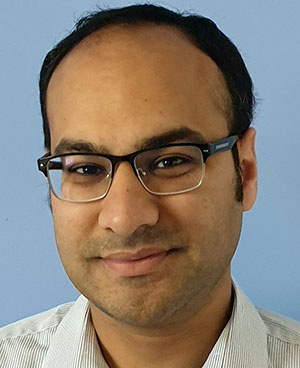- OT
- Science and vision
- Research
- Q&A: Anish Jindal
Q&A: Anish Jindal
The PhD student and specialist optometrist discusses how his research provides evidence for the use of OCT in primary care

01 May 2019
A new study published in Ophthalmic and Physiological Optics has found that optical coherence tomography (OCT) improves the diagnostic performance of optometrists compared to fundus observation alone. OT discusses the research with lead author and specialist optometrist Anish Jindal.
Why did you carry out this research?
OCT is becoming increasingly popular with optometrists. However, there is concern that there is limited evidence regarding its use in case finding in primary care. Therefore, I wanted to investigate whether OCT is providing any diagnostic benefit in detecting eye diseases within the primary care setting.

How was the study carried out?
We put an advert out inviting community-based optometrists to participate in free OCT training and interpretation where 50 optometrists were recruited. I produced an online learning package regarding OCT interpretation where the optometrists completed this training. They then attended an evening event at City, University of London where they completed a computer-based assessment. The assessment included images of healthy and diseased areas of the posterior segment with and without OCT information; they had to select their diagnosis and confidence in their decision.
What were the key findings?
With the additional OCT information, the mean percentage of correctly identified cases increased by 20%. The number of false positives reduced by two-thirds and the number of false negatives reduced by a half with the OCT information. We found that 94% of all optometrists who participated in the study performed better in correctly identifying diseases when they had access to OCT data. Practitioners were also more confident in diagnosing conditions. The other really interesting finding is that people with additional professional College of Optometrists qualifications, such as those in glaucoma and medical retina, performed better than those without.
Are there any questions that still need to be investigated?
The study used a vignette methodology. It was not simulating what happens in a real life routine clinical setting. Typically, the optometrist would have access to indirect ophthalmoscopy, visual fields findings and other data. Therefore, the true diagnostic benefit of OCT may be different if studied in a routine setting.
I think the next step would be to simulate a more realistic environment where the optometrists participating will have access to more clinical information that would also assess patient management and monitoring of conditions. Another important area of investigation would be, how does the performance of artificial intelligence compare to clinicians within the clinical pathway on real patients, given the recent ground breaking outcomes in this area.
Why do you think having evidence to support the use of new technology is important?
I think with any new technology, optometrists have been fantastic in embracing it. The danger is that if clinicians aren’t appropriately trained or if they don’t know how to interpret findings, this could lead to the patient being inappropriately managed in practice. They could be misdiagnosed or inappropriately referred. I think it is really important that we know how different tests affect our diagnostic capabilities and what effect that will have for our patients.
Image credit: National Eye Institute/Flickr


Comments (0)
You must be logged in to join the discussion. Log in